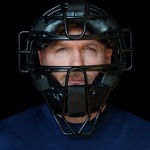The South Carolina Supreme Court overturned a $31 million verdict in a Ford rollover case stemming from a catastrophic accident in 2001 that caused brain damage to a 12-year-old boy. This was a hard case. A mother was driving with four children who were not wearing seat belts and the mother took her eyes off the road and swerved to get back on the road. The question was whether the design of the Ford Bronco was a substantial contributing cause to the child’s injuries.
Obviously, a jury found that it was and sent a powerful message to Ford: $16 million in actual damages and $15 million in punitive damages.
The South Carolina Supreme Court overturned the verdict for a lot of reasons. I won’t go into all of them but there are two reasons set forth for the court’s reversal that I think are of particular interest.
First, the court found that it is improper for lawyers in closing arguments “to arouse passion or prejudice.” The court cites these statements made during the plaintiff’s lawyer’s closing argument as improper:
1. “This is how Ford looks at this. That little bit of thirty people being killed every year didn’t matter. Those thirty people, those thirty extra people getting killed in a year didn’t matter to them because it was just a little bitty number.”
2. “It does matter about those people getting killed. Those thirty people do count. Those thirty people–that’s thirty more people that got killed that year. If you expect these vehicles to last about twenty years, that’s six hundred more people getting killed using this vehicle as opposed to a Chevy S-10 Blazer. That’s serious.”
3. “And that doesn’t count the paralyzed people, the quadriplegics, the people with serious injuries, the thousands of people that have been in these events because of this rollover propensity of this vehicle that they knew about, and they knew it since day one but they chose profit over safety every time because they looked at it as numbers. They didn’t look at it as lives, as people.”
4. “I submit to you that the evidence is that they did it because they thought it was a little, small number. . . . [T]hey did not look at it as thirty lives a year[], they didn’t look at it as six hundred lives. That’s how they should have looked at it, but that was not how they did it.”
5. “They got together at the highest levels of Ford Motor Company and they made a judgment that rather than delaying and improving the Bronco II, they were going to sell the vehicle as it was and that they were going to risk people’s lives and they were going to risk serious injuries like we have here today. They were going to risk people’s brains.”
6. “Jesse Branham is here today with a brain injury and six hundred other people, or however many it is, lost their lives, and numerous others have brain injuries or are paralyzed, quadriplegic, have extremely serious injuries. We believe that you should tell Ford Motor Company what you think about this kind of thing.”
The court found these improper because they relied on evidence that was inadmissible, because it asked for damages for harm to others, and because it improperly inspired the jury to act on passion as opposed to reason. These arguments are flawed.
If the evidence is inadmissible, then that is the basis to overturn the verdict. There is no need to tie it to an improper closing. Presumably, this would be true where evidence was inadmissible.
The court believes these statements led to asking for damages for harm to others. But the attorney is asking for punitive damages. We don’t have punitive damages in Maryland without proof of actual malice – which eliminates 99.999% of cases like this from being considered for punitive damages. But if you are asking for punitive damages, give the context of why there was a risk of harm to more than just the plaintiff. (Plaintiff’s lawyer also got into evidence the salaries of certain executives at Ford which sounds incredible. But, again, our law firm has never handled a punitive damages case so I really can’t speak to the standard for admissibility in these cases.) Continue reading











